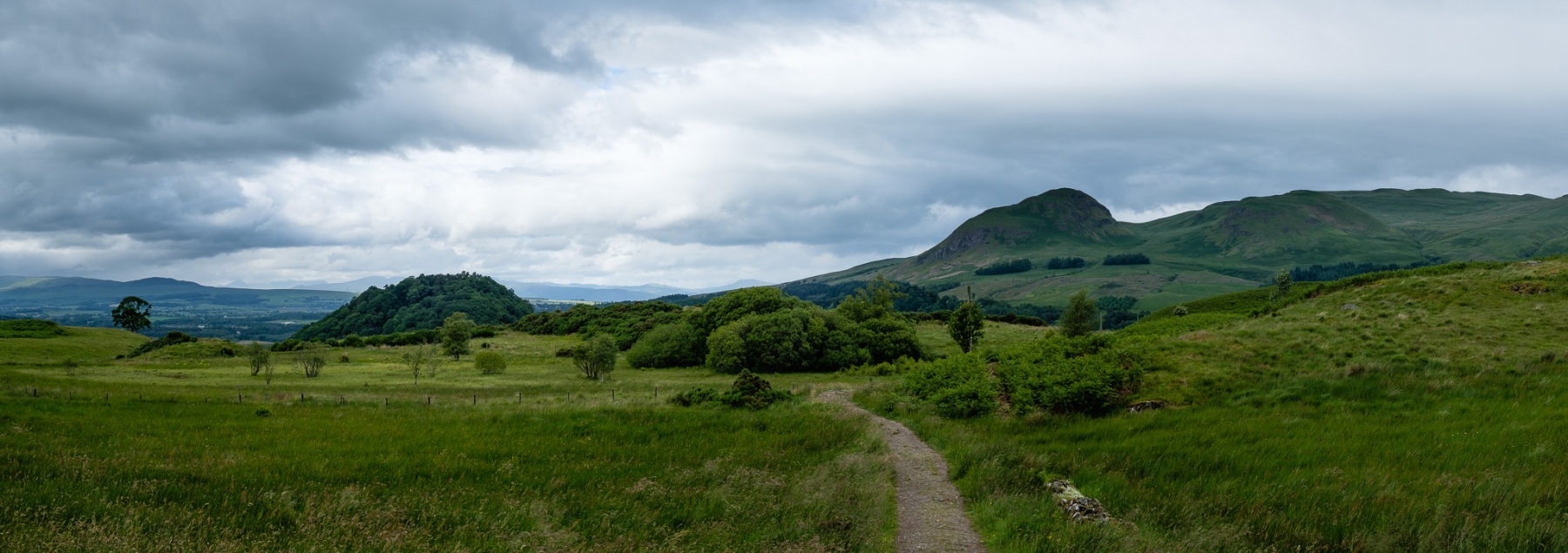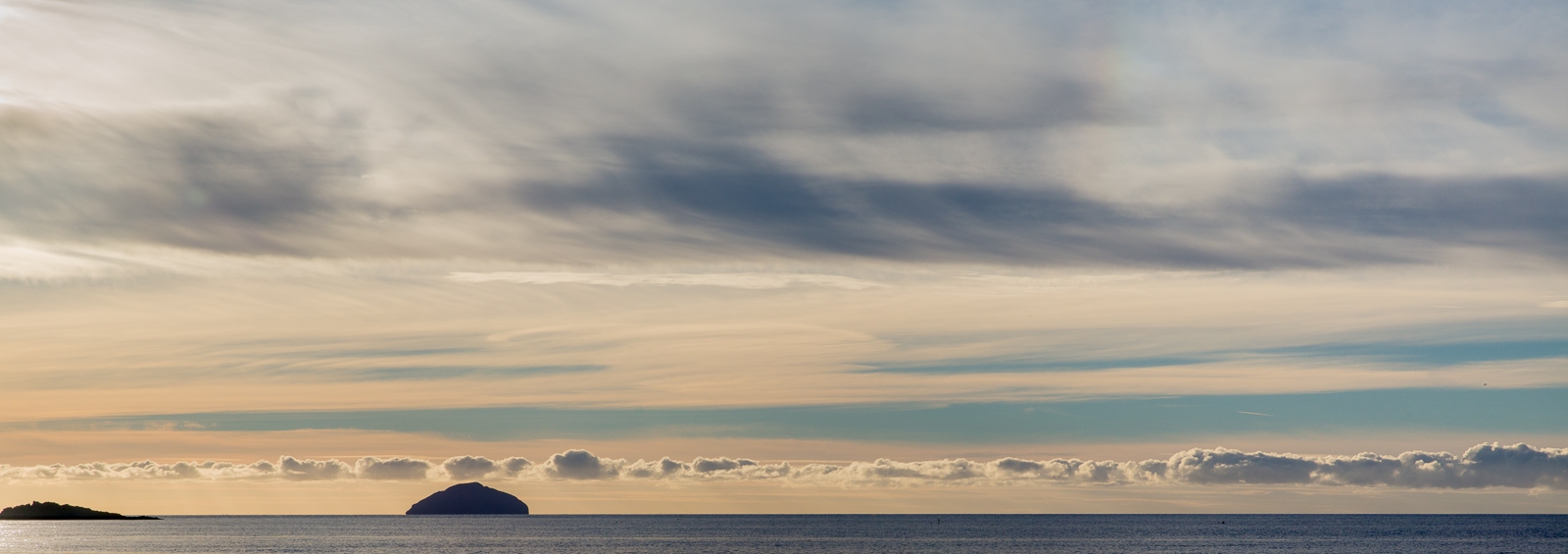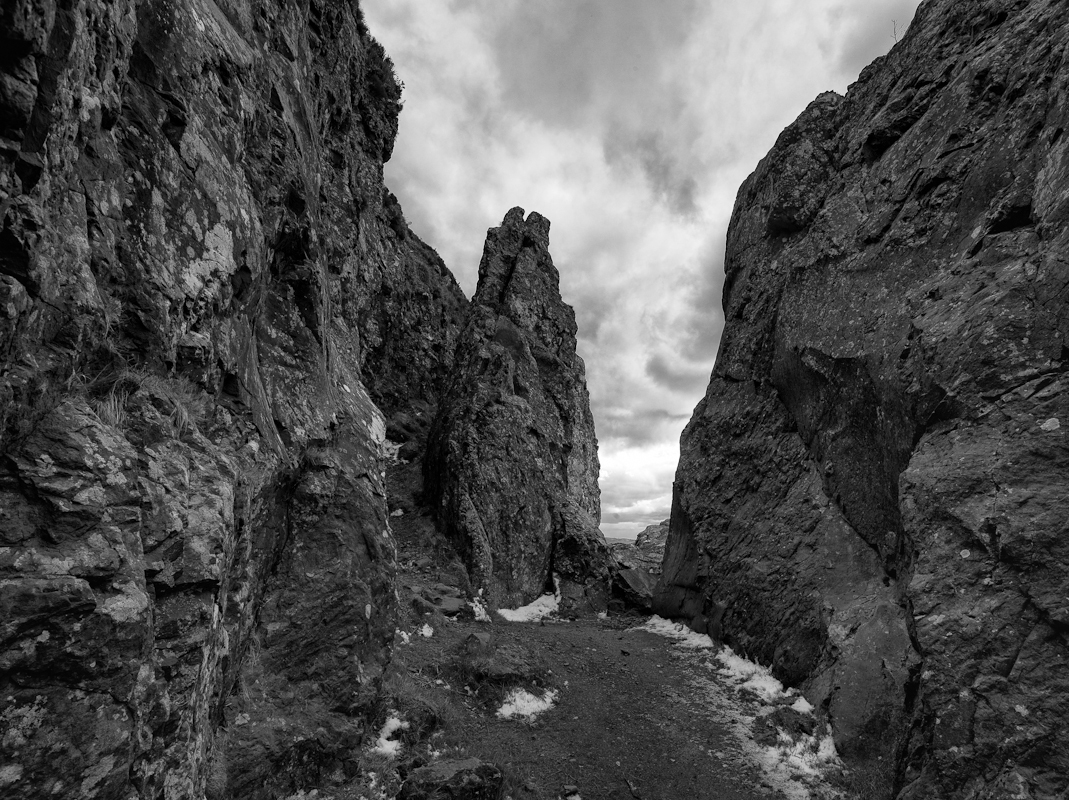The walk along a short stretch of the West Highland Way between Easter Carbeth and Dumgoyach is becoming one of our favourite short walks for a Sunday afternoon wander. The views to the Campsies and even Ben Lomond in the far distance when meandering down the well trodden track towards Dumgyach are simply stunning. I will never tire of these views. Especially with the ever changing and unpredictable Scottish weather. The light hitting the mountains and the atmospheric cloud formations are just never the same.
This is the view to Dumgoyach, Dumgoyne and Dumfoyne taken early on in the walk on a dreich day with flat lighting at the end of June.
Two weeks ago, a mixture of sunshine and fast moving clouds created a spectacle of light spots and light trails travelling across the forrests and the mountains. The monochrome photo above is, without a doubt, my favourite shot of the day, capturing a narrow band of light moving swiftly across the trees and foot of Dumgoyne and Dumfoyne. Below is the colour version.
It is not just the views that make this a wonderful walk. A slight detour from the track into the field to the South East of Dumgoyach is well worth it to explore the standing stones and admire Dunthreath Castle in the shadow of Dumgoyne. But I’ll keep those for a future post.


